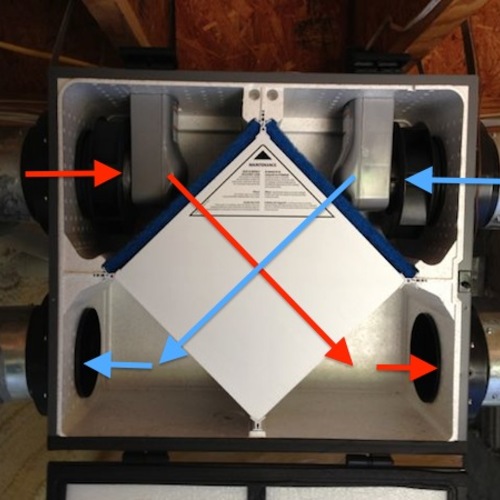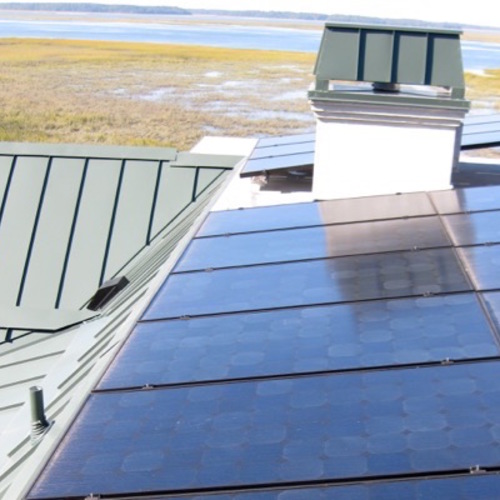
Image Credit: Energy Vanguard
The city of Aspen, Colorado has bucked the trend. Well, actually two trends, but first things first.
The 2015 International Energy Conservation Code (IECC) introduced another pathway for code compliance using what’s called the Energy Rating Index (ERI). Since the only thing that qualifies as an ERI right now is a HERS Index, RESNET and HERS raters have been pushing hard to get this into state and local codes. Several jurisdictions have already adopted it and some builders are using it.
Aspen, however, just adopted the 2015 IECC but they threw out the ERI compliance pathway. That’s bucked trend number one. Bucked trend number two is the motivation for what they substituted in place of the ERI. Keep reading to find out what that motivation was.
IECC compliance pathways
Before jumping into the details of the new Aspen energy code, let’s do a quick review of the different ways you can get a new home to comply with the IECC. Also, in case I don’t make it clear in every instance, I’m writing only about the residential energy code, not commercial.
If you’re building a new house in a place that’s on one of the recent versions of the IECC, you have a choice of how you show your building department that you comply with the code. The 2015 IECC has three compliance pathways, as a matter of fact. They’re listed right at the beginning of the residential section of the code. To pass, you have to choose one of the three options below and meet all the requirements therein:
The first one has a sub-choice for you to make, too. When deciding on the building enclosure specifications for insulation and fenestration (windows and doors), you can go with the prescriptive values in the tables or you can do some tradeoffs using the UA alternative. In addition, there are requirements for mechanical systems, lights, and other energy-using parts of the building.
The second one is often referred to as the performance path. You have to model the home as it is built and compare the energy costs to the same home modeled with a set of design specifications given by the IECC in Tables R405.5.2(1) and R405.5.2(2).
The third one is the ERI. The only way to get an ERI right now is to do a home energy rating.
OK, now we’re ready to talk about what Aspen is doing.
Meet the simplified alternative
That heading is your clue to the second trend that Aspen is bucking. If you talk to enough builders, code officials, and other stakeholders, you’ll find that a lot of people think codes are too complicated. Now, I agree with Albert Einstein on this subject: “Everything should be made as simple as possible, but not simpler.” The electrical code, naturally, has to have enough complexity to keep houses from burning down and people from getting electrocuted. Energy codes, however, certainly have room for simplification.
And that’s what Aspen has done. The way they chose to do that is something I’ve written about before. Their list of compliance pathways looks like this:
- Sections R401 through R404.
- Section R405 and the provisions of Sections R401 through R404 labeled “Mandatory.”
- Simplified Equivalent Compliance Alternative in Section R406 [emphasis added]
The only thing different is the last one. To the chagrin of HERS raters, Aspen dumped the ERI path. Don’t bring your HERS results to the Aspen building department because they won’t take them. Instead, they’ve created a truly simplified path. You don’t need a HERS rater. You don’t need to make sure you’ve got the proper R-values in the home. You just need to do three things. Make sure the building:
- has minimal heating and cooling loads;
- reduces hot water consumption; and
- cuts energy used for lighting.
This compliance pathway in the code is so simple, in fact, I can put the whole thing right here. It’s only 189 words. Ready? Don’t blink.
Section R406.1 Equivalent building option. Dwellings that meet both of the following criteria shall be deemed in compliance with this chapter.
1. The ratio of the air conditioning capacity to conditioned space is less than or equal to 1 ton per 1000 square feet.
2. The ratio of the space heating system capacity to floor area of conditioned space is less than or equal to 32,000 Btu/h per 1000 square feet.
Section R406.2 Equivalent hot water.
The distance from the hot water supply outlet to hot water pipe to the hot water entry to a room where hot water is used shall be no more than 10 ft. This shall apply to the kitchens, bathrooms with showers or tub, and rooms with a clothes washer.
Section R406.3 Equivalent lighting.
Dwellings in compliance with at least one of the following requirements shall be deemed in compliance with Section 404:
1. Lamps over 15 watts shall be CFL, LED, or have an efficacy not less than 90 lumens per watt.
2. At least 90% of the lamps or fixtures shall have an efficacy not less than 75 lumens per watt.
That’s it. All you have to do is meet the requirements in those three little sections and you’re in.
The part of most interest to me is the first one. (Hey, I’m more of an enclosure and mechanicals guy than a hot water or lighting guy.) That’s what I wrote about before when I posted the video of Chris Benedict and Henry Gifford and their one-act play on what they called the Perfect Energy Code.
Now, the trick to doing this kind of code is choosing the correct numbers. Aspen has an insignificant cooling load (says this guy who was born in Houston) so the part about installing a cooling system with a capacity no more than one ton (12,000 BTU/hr) per 1,000 square feet isn’t real important… for Aspen.
But the heating part is important. Their number is 32,000 BTU/hr for each 1,000 square feet of conditioned floor area. I asked Stephen Kanipe, head building official for the city of Aspen, how they arrived at that number. “We talked to mechanical engineers with a lot of experience in the area,” he said, “and this was the number they told us would be better than code but still achievable.”
Here’s a little background for you, too. This simplified alternative was proposed for the IECC itself during the recent deliberations for the 2018 version. I spoke to someone involved in that proposal and was told that although it didn’t pass, it was well received. The main reason it didn’t pass was that they didn’t have the numbers fleshed out for the different climate zones. I think they’ll probably pick it up again for the 2021 code cycle.
Where will this go?
This is a big deal in the world of energy codes. It could change the direction things have been going and HERS raters don’t like it. Mark McLain, an architect and HERS rater in the Aspen area, protested the change as a relaxation of energy conservation codes. He wrote about it in his blog, where he also published the letter he sent to the Aspen city council.
I think Aspen’s onto something with their new code. I don’t agree that this is a relaxation of the code. If they did get the right number for heating capacity, it should be better than the prescriptive path. I’m sure it’s not perfect, but this is a good way to keep things simple and enforceable.
It’ll be interesting to see how many builders choose the Simplified Equivalent Compliance Alternative and what they do to meet it. They’ve got to get the enclosure right, though, to be able to heat their homes within that capacity limit of 32,000 BTU/hr per 1,000 square feet. And as a side benefit, they can save on the cost of strip heating to keep ice dams off the roof. If they truly get the enclosure right, they won’t need them.
Allison Bailes of Decatur, Georgia, is a speaker, writer, building science consultant, and the author of the Energy Vanguard Blog. You can follow him on Twitter at @EnergyVanguard.
Weekly Newsletter
Get building science and energy efficiency advice, plus special offers, in your inbox.















3 Comments
Heating system capacity
I guess the limit might reduce oversizing of heating systems. But if your heating appliance can modulate to a point well below the limit, what's the harm if capacity is higher? A nominal 12,000 btu/ hr minisplit may have a capacity over 20,000, but so what? It can modulate down to 3,000. A house might require multiple units with total capacities that exceed the limit, but might never use the total capacity.
Of course the most glaring omission is the failure to regulate house size, unless dealt with in another code. A few 15,000 square foot houses are still energy hogs, even if they meet the code.
Makes more sense to limit design load.
Good on Paper... But in reality
As a code reviewer, I think it would work so long as they also provide an energy model summary at building permit indicating how they achieved the system size, and it would also have to come with a moratorium for installing new or additional HVAC systems for 10 years after the house was built. You would not want someone not doing the insulation/ air-leakage requirements, installing a HVAC system that meets code technically, and then selling the building before the winter/summer sets in only to have the new owner have to install a bigger HVAC system or a new supplemental HVAC system. For my permitting and inspection agency this would be an extreme amount of coordination because the small permits like an HVAC system upgrade or installation go through a different permit process than a new building permit. And believe me, if there is a loophole to exploit, it will be exploited. Though due to the simplicity, it may be possible to keep track of.
Part of a building department's role is consumer protection. If the consumer cannot be adequately protected against being sold a house of goods that does not function, then this code revision would not do anyone any favors. And what about plug-in electrical heaters?
Walking backwards over the cliff...
"The ratio of the space heating system capacity to floor area of conditioned space is less than or equal to 32,000 Btu/h per 1000 square feet."
REALLLYYY? 32 BTU/hr per square foot?
A tight house built to code minimum R & U prescriptive with HRV should be no more than HALF that, closing in on a THIRD!
My 2x4 framed sub-code-R with all clear glass antique would have a heat load less than 32,000 BTU/hr per 1000' at Aspens 99% outdoor temp!
Then they explain how they got to that number:
----------
"I asked Stephen Kanipe, head building official for the city of Aspen, how they arrived at that number. "We talked to mechanical engineers with a lot of experience in the area," he said, "and this was the number they told us would be better than code but still achievable.” "
--------
Uh huh, better than code... right... What code is it better than, again?
Maybe if the 99% outside design temp were -75F, say in the Brooks Range in AK it might be reasonable, but Aspen's 99% temperature bin is in the -10F-ish range. MY house would still beat that 32,000 BTU/hr number with considerable margin, and it's WAY sub-code relative to IRC 2015 prescriptive Rs.
The crusty old-school rule-of-thumb HVAC guys in my neighborhood (outside design temps in the 0F- +5F range) use 35 BTU/hr per foot for older air-leaky stuff, 25 BTU/ft for 2x6 framed houses, and always manage to oversize by a large margin. Even at -10F (instead of +5F) it would only move the rules of thumb up by another 5 BTU/hr per square foot to 30 BTU/hr for 2x6 /R19 type construction.
Achievable, sure it's stripe on the floor, not a hurdle!
Better than code? Don't think so... not even close.
Log in or create an account to post a comment.
Sign up Log in